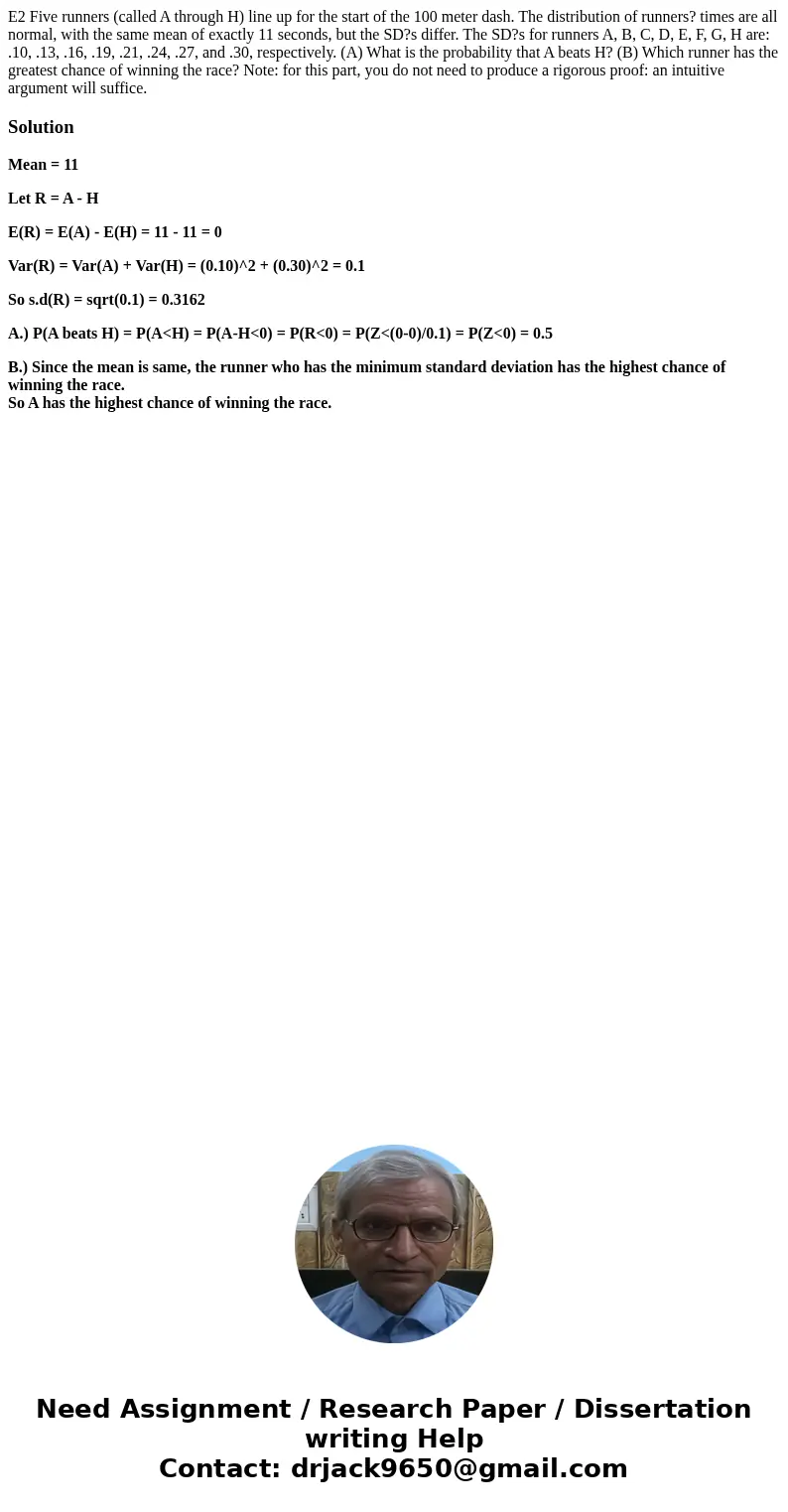E2 Five runners called A through H line up for the start of
E2 Five runners (called A through H) line up for the start of the 100 meter dash. The distribution of runners? times are all normal, with the same mean of exactly 11 seconds, but the SD?s differ. The SD?s for runners A, B, C, D, E, F, G, H are: .10, .13, .16, .19, .21, .24, .27, and .30, respectively. (A) What is the probability that A beats H? (B) Which runner has the greatest chance of winning the race? Note: for this part, you do not need to produce a rigorous proof: an intuitive argument will suffice. 
Solution
Mean = 11
Let R = A - H
E(R) = E(A) - E(H) = 11 - 11 = 0
Var(R) = Var(A) + Var(H) = (0.10)^2 + (0.30)^2 = 0.1
So s.d(R) = sqrt(0.1) = 0.3162
A.) P(A beats H) = P(A<H) = P(A-H<0) = P(R<0) = P(Z<(0-0)/0.1) = P(Z<0) = 0.5
B.) Since the mean is same, the runner who has the minimum standard deviation has the highest chance of winning the race.
So A has the highest chance of winning the race.

 Homework Sourse
Homework Sourse